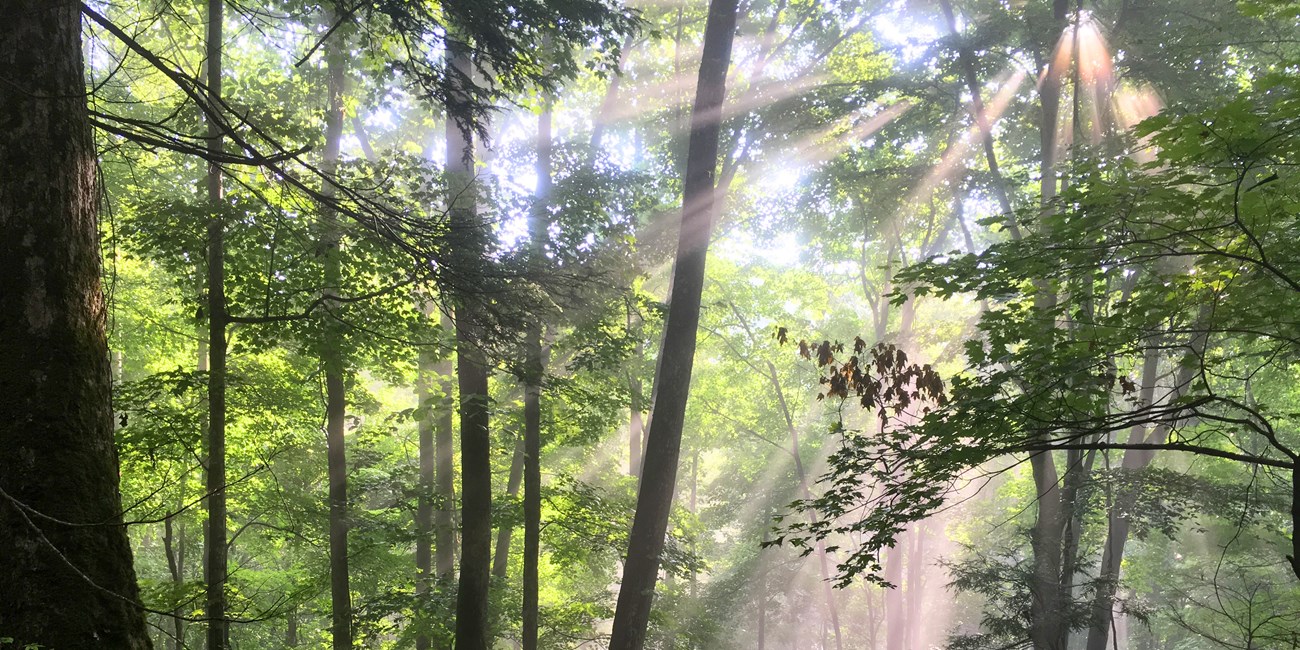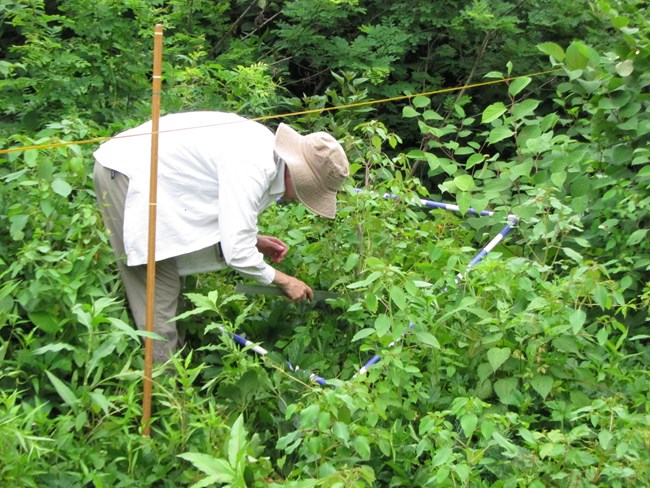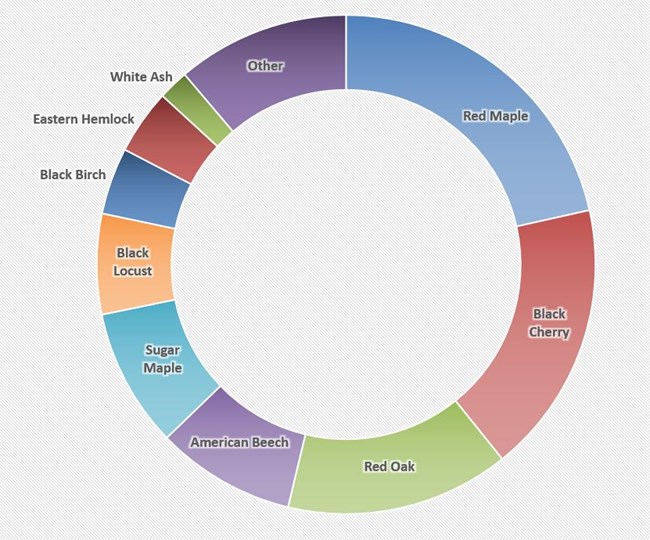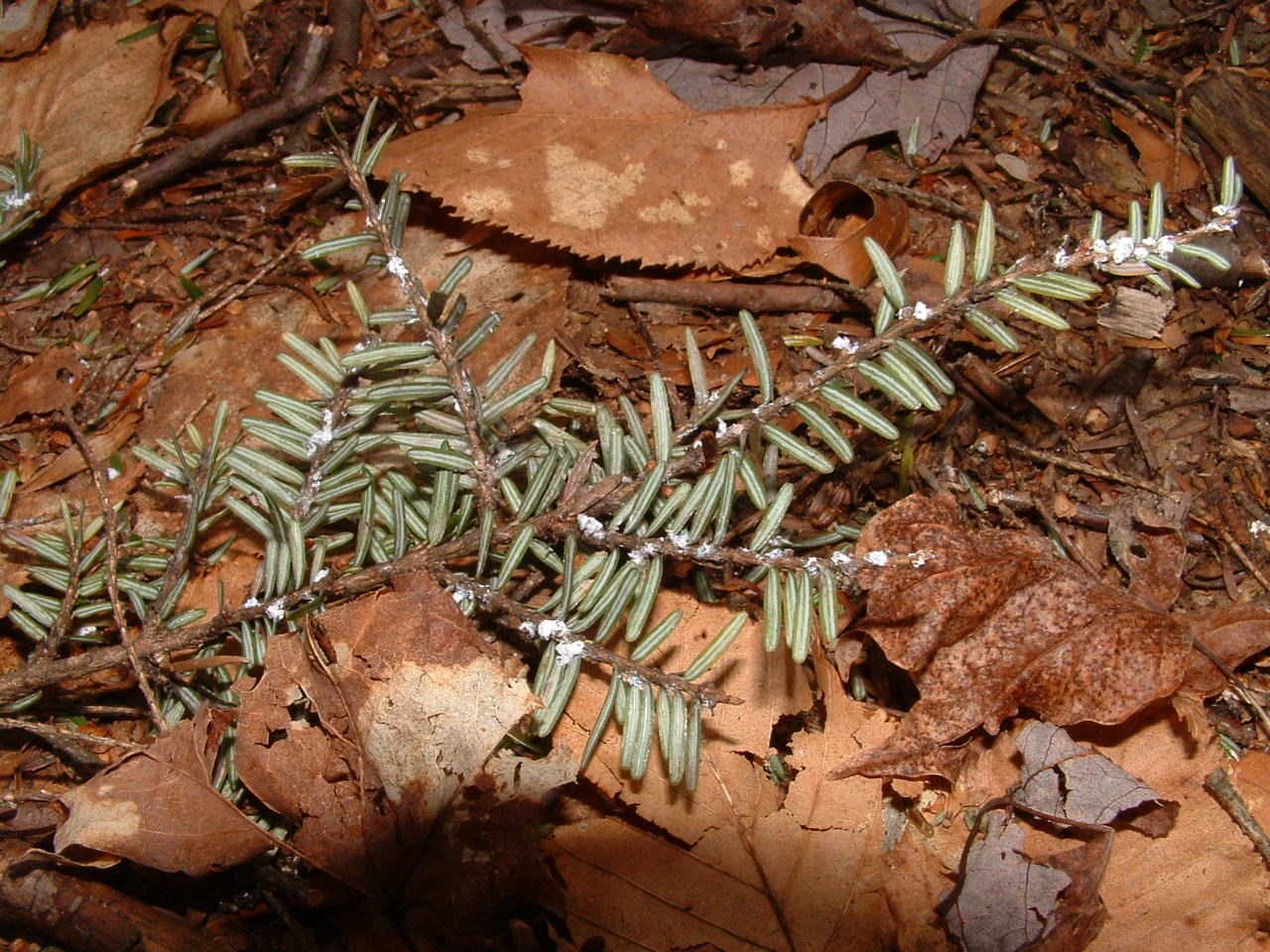Last updated: January 22, 2020
Article
Forest Health Monitoring in Allegheny Portage Railroad National Historic Site

NPS
The majority of Allegheny Portage Railroad National Historic Site (ALPO) is forested. These forests are critical park resources that perform many important functions. For example, they create habitat for hundreds of species of plants and animals, maintain soil stability, and protect water quality. Besides providing beautiful landscapes for people to recreate in, forests also influence our weather and reduce some gases that contribute to climate change.
Monitoring Helps Protect Park Forests

NPS
The Eastern Rivers & Mountains Network (ERMN) monitors forest health by collecting data on canopy trees, tree regeneration, shrubs, plant diversity, downed logs, and soil at permanent monitoring plots. Monitoring began in 2007. ERMN collects data from 20 plots in ALPO over a 4-year rotation, such that each plot is visited every 5th year.
One reason that monitoring forest health is so important is that the forests are constantly changing. Storms, pests, pathogens, drought, and new species all play a role in shaping the forest. Studying the different components of a forest gives the ERMN information on the health of the forest, and allows park managers to make better informed decisions on how to manage the forest. In particular, mortality (how many trees are dying), recruitment (how many trees are growing into the canopy), and tree growth are important indicators of forest health and vitality.
“How are park forests changing over time in relation to weather, climate, landscape dynamics, invasive species, deer browse, and natural processes such as disturbances and succession?”
Common Tree Species are Strong and Stable

The forests of ALPO are dominated by red maple (Acer rubrum) and black cherry (Prunus serotina), with American beech (Fagus grandifolia), sugar maple (Acer saccharum), and red oak (Quercus rubra) as other common species. All of these species show strong growth (1 - 2% per year) and are abundant in the tree seedling layer, meaning the composition of the forests of ALPO is relatively stable. Two species that may become more common in the future forest canopy are striped maple (Acer pensylvanicum) and American beech.
Invasive Species Impact Forest Health

NPS
Non-native invasive species dramatically change park forests by degrading wildlife habitat, preventing tree regeneration, and out-competing native plants. In ALPO:
-
White ash (Fraxinus americana) trees are dying (5% each year) as a result of the emerald ash borer (Agrilus planipennis), an invasive beetle. All of the park’s ash trees will likely be dead by 2025.
- Hemlock (Tsuga canadensis) trees are also experiencing high mortality due to the hemlock wooly adelgid (Adelges tsugae), an invasive insect.
- Invasive exotic plant species continue to impact the native plants in the forest understory and tree regeneration. Multiflora rose (Rosa multiflora) and Japanese barberry (Berberis thunbergii) are the most commonly observed invasive exotic species in the park.
For More Information
ERMN tracks forest health in a series of 360 permanent monitoring plots set up in eight national parks. It gathers information on tree health, forest regeneration, plant diversity, invasive species, and more.
To learn more, visit the ERMN Vegetation & Soils webpage.
Or, check out all the sciency details in:
Perles S and Others. 2016. Forest dynamics in national parks in the Eastern Rivers and Mountains Network. Natural Resource Report. NPS/ERMN/NRR—2016/1182. National Park Service. Fort Collins, Colorado
Perles SJ and Others. 2014. Forest health monitoring in the Eastern Rivers and Mountains Network: 2009–2012 summary report. Natural Resource Report. NPS/ERMN/NRR—2014/803. Fort Collins, Colorado
